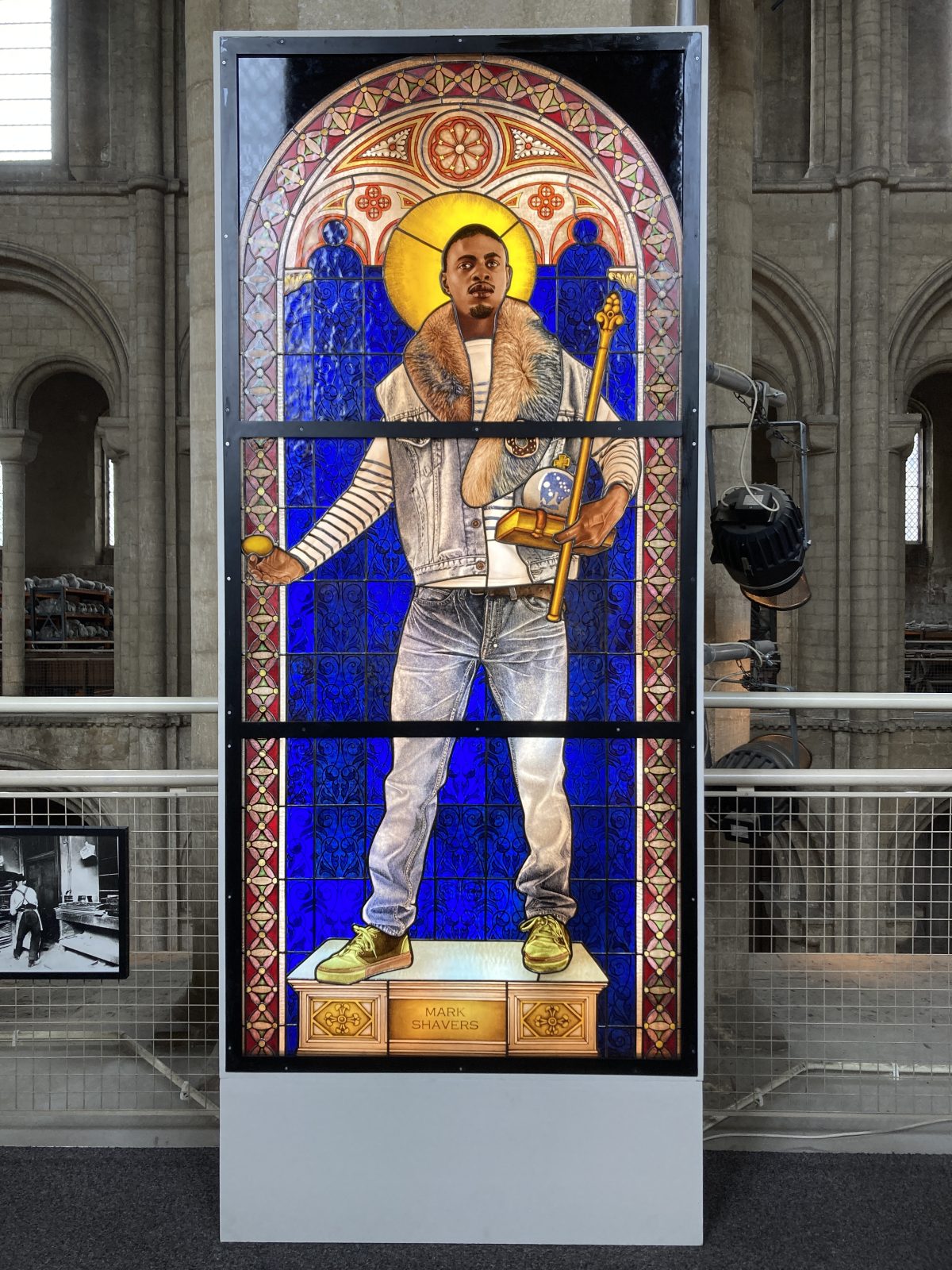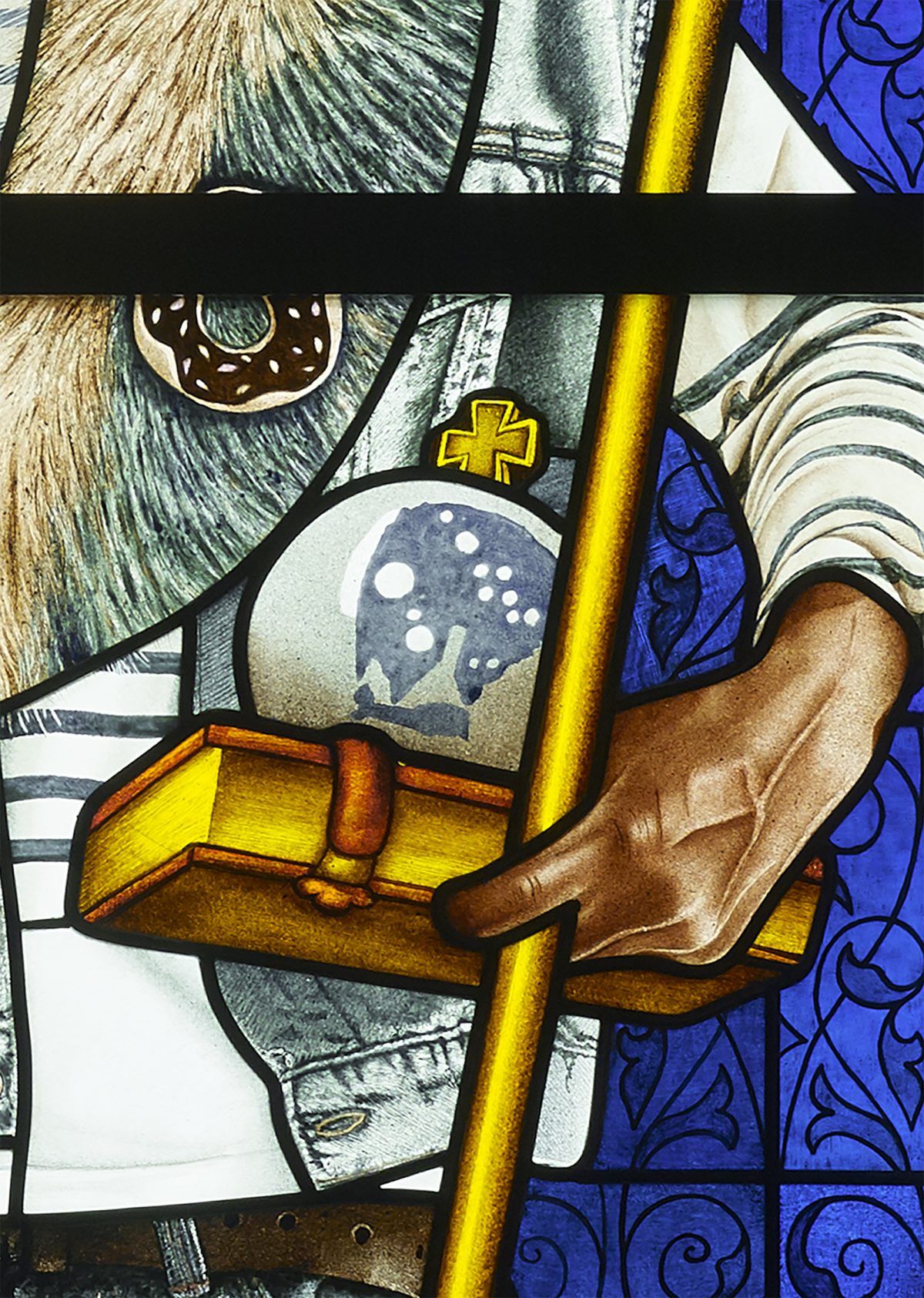

The Stained Glass Museum, which is housed in a cathedral in Cambridgeshire, announced the acquisition of Kehinde Wiley’s “Saint Adelaide” (2014), an eight-foot-tall stained-glass portrait that centers a contemporary young Black man. The motif replaces the traditional figure of the saint, which typically portrayed as white in Western religious artworks. An early example of Wiley’s work in this medium, “Saint Adelaide,” is the first of the artist’s freestanding stained-glass portraits to enter a museum collection. It is also the first piece by a self-identified queer Black artist to join the Stained Glass Museum’s holdings of stained glass panels and fragments from medieval times to the present day.

Wiley, who famously painted Barack Obama’s official presidential portrait in 2018, is celebrated for his vibrant depictions of present-day Black subjects, whom he often paints into religious, mythical, or historical scenes adapted from the Western art historical canon. In 2014, Wiley embarked upon a new body of work inspired by stained glass windows and studies by 19th-century French Neoclassical painter Jean-Auguste-Dominique Ingres. Designed for the Royal Chapel of Saint Ferdinand in Paris, Ingres’ church windows were manufactured in Sevres, France, circa 1843.
Wiley’s stained glass panels, which were produced by artisan stained glass manufacturers in the Czech Republic, swap out the religious icons that Ingres depicted — Saint Ursula, the Virgin Mary, Saint Adelaide — for contemporary Black subjects. Adelaide, whose name appears in Judy Chicago’s 1979 The Dinner Party installation, was a 10th-century Holy Roman Empress who was canonized for her religious and charity work. Wiley closely mimics Ingres’ portrayal of the saint, depicting a haloed central figure against an ornately patterned, deep blue backdrop contained within a decorative gothic frame. However, bearing Adelaide’s scepter in her place is a young Black man donning jeans and sneakers. The model, Brooklyn resident Mark Shavers, has featured in Wiley’s work in the past, including in one instance as Charles I.
Stained Glass Museum Director and Curator Jasmine Allen became interested in acquiring one of Wiley’s stained glass portraits when she first encountered them at an exhibition in Paris in 2017. “In a simple but powerful way Wiley’s art addresses the representation of young Black men in contemporary culture and challenges the conventions of western art,” she said in a statement. “As cultural institutions in the UK are rightly beginning to confront our colonial past and its legacy today, this acquisition enables us to explore and question attitudes towards race, gender and religion in stained glass.”
“Saint Adelaide” is now on permanent view at the Stained Glass Museum, which is located in the south triforium of Ely Cathedral. Last year, Wiley completed his first site-specific stained glass artwork, a 55-foot-long triptych titled Go that depicted young Black New Yorkers breakdancing. The piece was among the public artworks inaugurating New York’s new Moynihan Train Hall, which opened in January 2021.
0 Commentaires